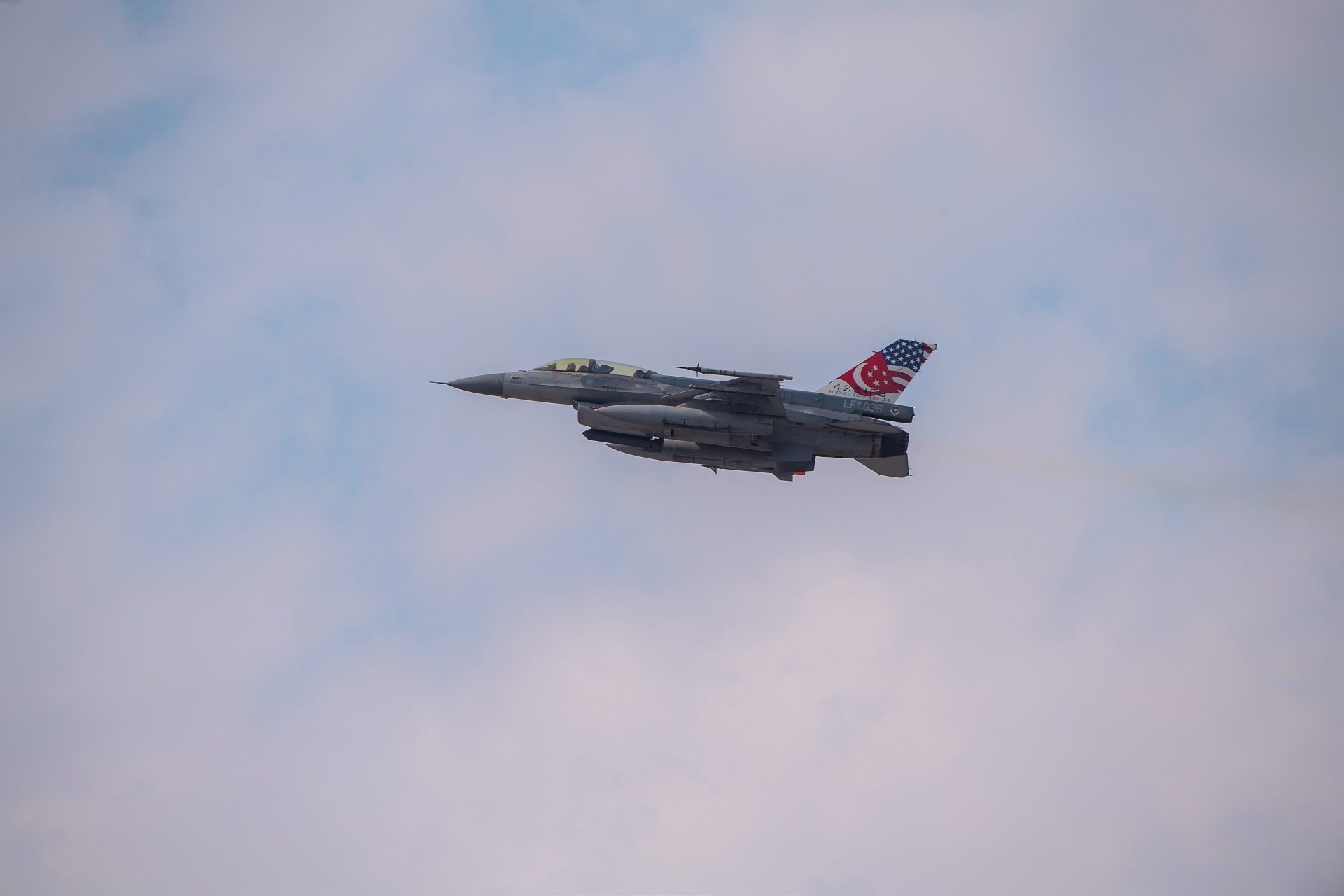SMARTER, MORE INTEGRATED FIGHTING FORCE
It's the SAF's first integrated exercise since the COVID-19 pandemic, and land and air forces came together seamlessly to put their interoperability to the test.Sense more, fight smarter, strike as one.
This is the objective of Exercise Forging Sabre 2021 (XFS21), the Singapore Armed Forces' (SAF's) pinnacle sense-and-strike exercise.
The biennial exercise, which started in 2005, is into its eighth instalment. Conducted from 14 to 25 Sep at Mountain Home Air Force Base, Idaho, United States, this year's exercise sees the participation of about 600 personnel from the Republic of Singapore Air Force (RSAF) and 200 personnel from the Singapore Army. It also sees a suite of land and air assets coming together in a test of seamless integration and interoperability.
Sense, fight smart, strike as one
The SAF will be able to sense more using a suite of aerial and ground sensors, such as the RSAF's Heron 1 Unmanned Aerial Vehicle (UAV) and the Army's TPQ-53 Weapon Locating Radar (WLR) respectively, to scan the battlefield and collect timely and accurate intelligence. This time around, the Heron 1 UAV will be deployed with a smaller drone to scan the area of operation at different altitudes. The larger Heron 1 UAV is able to see more and further, while the smaller drone will zero in to conduct more close-up, in-depth surveillance.
The use of technology such as artificial intelligence (AI) and data analytics will also make this exercise a "smarter" one. The deployment of the Command and Control Information System (CCIS) (see below) at the Command Post (CP) will provide commanders with an overview of all the battlefield assets and recommend weapons to take out specific targets.
With the support of the CCIS, XFS21 will see the deployment of a full range of assets and weapons from both the air and land. These include F-15SG and F-16C/D fighter jets working with commando lasing teams and STrike ObserveRs Mission or STORM teams to take down multiple targets, and AH-64D Apache attack helicopters and High Mobility Artillery Rocket Systems engaging in joint live-firing exercises. The endurance of the fighters in the air is also extended with air-to-air refuelling carried out by the A330 Multi-Role Tanker Transport.
Inaugural participation of Army's HQ SS
This year's exercise marked many firsts, one of which is the inaugural participation of the Army's Headquarters Sense and Strike (HQ SS) which was inaugurated last November. It came about following the reorganisation of Headquarters Army Intelligence and Headquarters Singapore Artillery under 6 Division (6 Div), integrating the Army's tactical intelligence and fires capabilities.
Tapping on the whole-of-SAF sensing capabilities, HQ SS is able to obtain 24/7 pervasive knowledge of targets.
Colonel (COL) Adrian Teng, 43, Commander 6 Div and HQ SS, explained the significance of HQ SS's participation at XFS21: "This is an important milestone for HQ SS because the vast training space allows us to conduct realistic integrated live-firing training with our air force.
"Through the exercise, we have validated the next-generation Army's tactical intelligence and fires capability and at the same time harnessed the operational synergies with the RSAF. This allows the next-generation army to see better and shoot faster, so that we can address emerging challenges in the new operating environment that is going to be more complex and dynamic."
Tapping on AI and data analytics to fight
Another first at the exercise is the deployment of the CCIS at the CP. The CCIS was developed by the SAF with the support of the Defence Science and Technology Agency (DSTA).
The CCIS is enabled by a Decision Support System to enhance the SAF's sense and strike capabilities by shortening the sensor-to-shooter cycle.
In the past, commanders would have to study information from different entities in order to decide on the course of action. With the CCIS Mission Portal, they will have a real-time overview of the SAF’s sense and strike assets at their fingertips, which enables them to make decisions more effectively and deploy the most optimal assets to neutralise the threats.
The CCIS also makes use of AI, data analytics and weapon-to-target matching algorithms to recommend optimal warfighting solutions.
This is paired with mission parameters based on user inputs and weapon-to-target matching algorithms, such as timeliness, survivability, mission success rate, impact on other missions, and resource optimisation, to give commanders an assessment of the effectiveness of the different solutions.
"The CCIS is a force multiplier for the SAF. It leverages technology such as AI, modelling and simulation," said Mr Sim Jian Ping. The 39-year-old is Head of Capability Development (Military Information) at the Information Programme Centre in DSTA.
"AI enables a lot of the automation and enhances the decision-making, while modelling and simulation allow a lot of testing to be scaled before being validated at the exercise. These can automate certain processes and enhance the decision-making process, to enhance the overall mission effectiveness."










